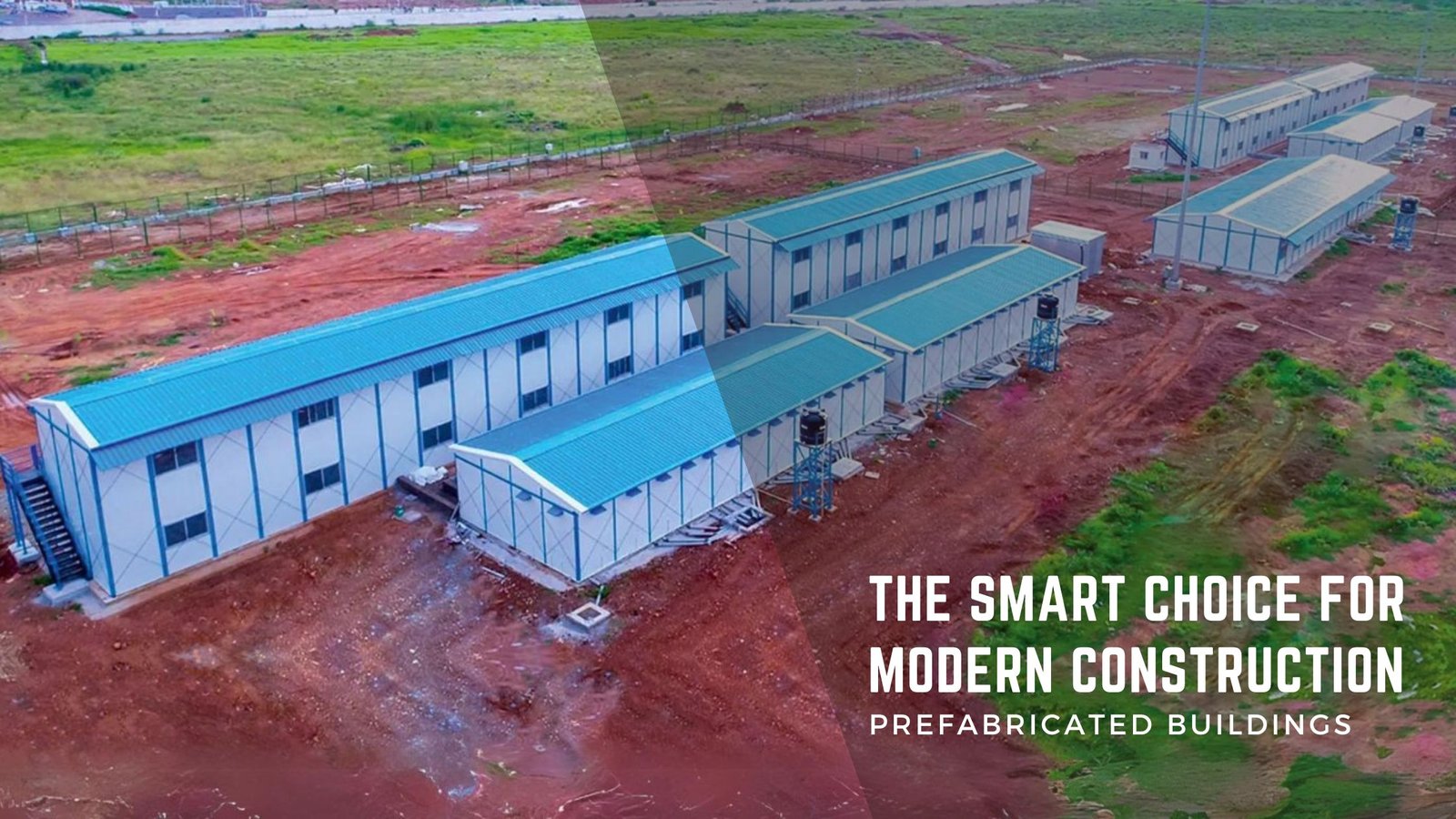
Easy Prefabricated Buildings and Steel Structures

Outline
- Introduction to Prefabricated Buildings and Steel Structures
- Advantages of Prefabricated Buildings
- Speed of Construction
- Cost Efficiency
- Customization Options
- Benefits of Steel Structures
- Strength and Durability
- Sustainability
- Design Flexibility
- Applications of Prefabricated Buildings and Steel Structures
- Residential Buildings
- Commercial Buildings
- Industrial Structures
- Key Considerations When Choosing Prefabricated Buildings and Steel Structures
- Building Codes and Regulations
- Environmental Impact
- Maintenance Requirements
- Popular Prefabricated Building and Steel Structure Companies
- Case Studies: Successful Implementation of Prefabricated Buildings and Steel Structures
- Future Trends in Prefabricated Construction and Steel Structures
- Conclusion
Easy Prefabricated Buildings and Steel Structures
In today’s rapidly evolving construction industry, the demand for efficient, cost-effective, and sustainable building solutions is higher than ever. Prefabricated buildings and steel structures have emerged as popular choices for developers, architects, and contractors alike, offering numerous advantages over traditional construction methods. Let’s delve into the world of easy prefabricated buildings and steel structures to understand their benefits, applications, and future prospects.
Introduction to Prefabricated Buildings and Steel Structures
Prefabricated buildings, also known as prefab or modular buildings, are structures that are manufactured off-site in controlled factory environments and then transported to the construction site for assembly. Steel structures, on the other hand, utilize steel as the primary building material, offering exceptional strength, durability, and versatility.
Advantages of Prefabricated Buildings
Speed of Construction
One of the most significant advantages of prefabricated buildings is their rapid construction process. Since the components are fabricated off-site, construction time is significantly reduced, allowing for quicker project completion and faster occupancy.
Cost Efficiency
Prefabricated buildings are often more cost-effective than traditional construction methods due to reduced labor and material waste, as well as streamlined manufacturing processes. Additionally, the ability to mass-produce components leads to economies of scale, further lowering overall project costs.
Customization Options
Contrary to common misconceptions, prefabricated buildings offer a high degree of customization. From architectural design to interior finishes, developers and architects can tailor prefabricated structures to meet specific project requirements and aesthetic preferences.
Benefits of Steel Structures
Strength and Durability
Steel structures are renowned for their strength and durability, making them ideal for a wide range of applications, including high-rise buildings, warehouses, and industrial facilities. Steel boasts a high strength-to-weight ratio, allowing for lighter structural elements without compromising structural integrity.
Sustainability
In an era of increasing environmental awareness, steel structures offer sustainable building solutions. Steel is recyclable and can be repurposed indefinitely without losing its properties, making it an environmentally friendly choice for construction projects.
Design Flexibility
Steel’s versatility allows for innovative architectural designs and flexible floor plans. From sleek, modern aesthetics to traditional building styles, steel structures can accommodate various design preferences while maintaining structural integrity.
Applications of Prefabricated Buildings and Steel Structures
Prefabricated buildings and steel structures find applications across various sectors, including:
- Residential Buildings: Prefabricated homes offer affordable and energy-efficient housing solutions for individuals and families.
- Commercial Buildings: From office complexes to retail centers, prefabricated commercial buildings provide versatile and cost-effective spaces for businesses.
- Industrial Structures: Steel structures are well-suited for industrial applications such as manufacturing plants, warehouses, and distribution centers.
Key Considerations When Choosing Prefabricated Buildings and Steel Structures
Before embarking on a prefabricated construction project, it’s essential to consider the following factors:
- Building Codes and Regulations: Ensure compliance with local building codes and regulations to avoid delays and costly revisions.
- Environmental Impact: Assess the environmental impact of materials and construction processes to minimize carbon footprint and promote sustainability.
- Maintenance Requirements: Evaluate long-term maintenance requirements and durability to ensure the longevity of the structure.
Popular Prefabricated Building and Steel Structure Companies
Several companies specialize in prefabricated buildings and steel structures, offering innovative solutions tailored to specific project needs. Some notable companies include:
- XYZ Modular Homes
- ABC Steel Structures
- DEF Prefab Solutions
Case Studies: Successful Implementation of Prefabricated Buildings and Steel Structures
To illustrate the effectiveness of prefabricated construction and steel structures, let’s explore two case studies:
XYZ Modular Homes: By utilizing prefabricated construction methods, XYZ Modular Homes completed a residential housing project 30% faster than traditional methods, resulting in significant cost savings for the developer.
ABC Steel Structures: ABC Steel Structures designed and constructed a state-of-the-art warehouse facility using steel, achieving unparalleled strength and durability while minimizing environmental impact through sustainable practices.
Future Trends in Prefabricated Construction and Steel Structures
As technology continues to advance, the future of prefabricated construction and steel structures looks promising. Key trends shaping the industry include:
- Integration of Building Information Modeling (BIM) for enhanced project coordination and efficiency.
- Adoption of advanced materials and fabrication techniques to further improve structural performance and sustainability.
- Expansion of off-site construction methods to meet the growing demand for rapid and cost-effective building solutions.
Conclusion
Easy prefabricated buildings and steel structures offer compelling advantages in terms of speed, cost efficiency, and sustainability. By leveraging innovative construction methods and materials, developers and contractors can create durable, customizable, and environmentally friendly buildings to meet the evolving needs of the built environment.
FAQs
Are prefabricated buildings cheaper than traditional construction methods?
- Yes, prefabricated buildings often result in cost savings due to reduced labor and material waste.
Can prefabricated buildings be customized to suit specific design requirements?
- Absolutely, prefabricated buildings offer a high degree of customization, allowing developers to tailor designs to their preferences.
Are steel structures environmentally friendly?
- Yes, steel structures are sustainable as steel is recyclable and can be repurposed without losing its properties.
What are the maintenance requirements for steel structures?
- Steel structures require minimal maintenance and are resistant to corrosion and deterioration.
How long does it take to assemble a prefabricated building on-site?
- The assembly time varies depending on the size and complexity of the structure but is generally faster than traditional construction methods.




